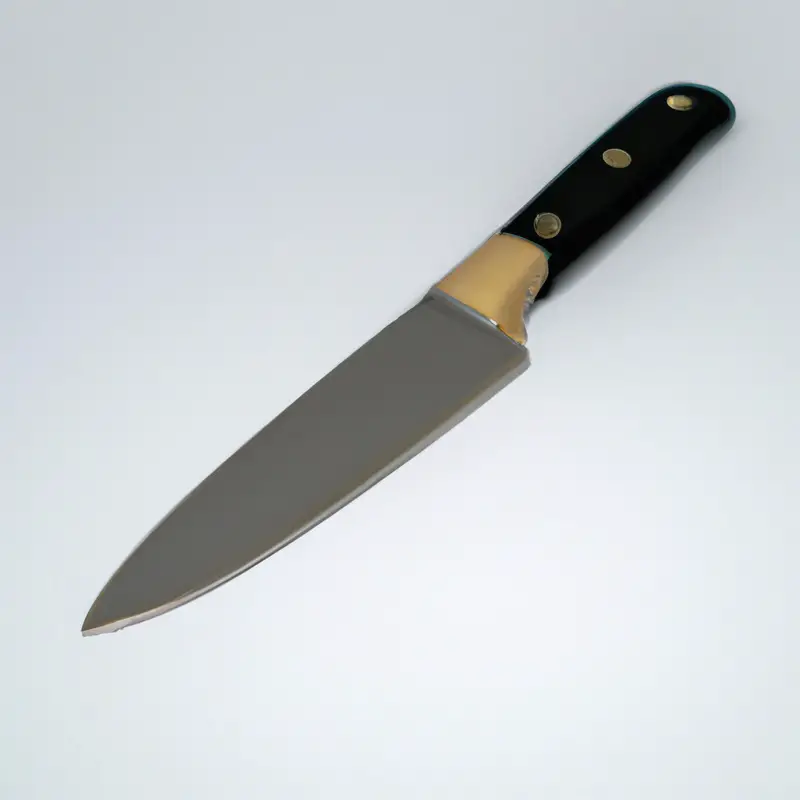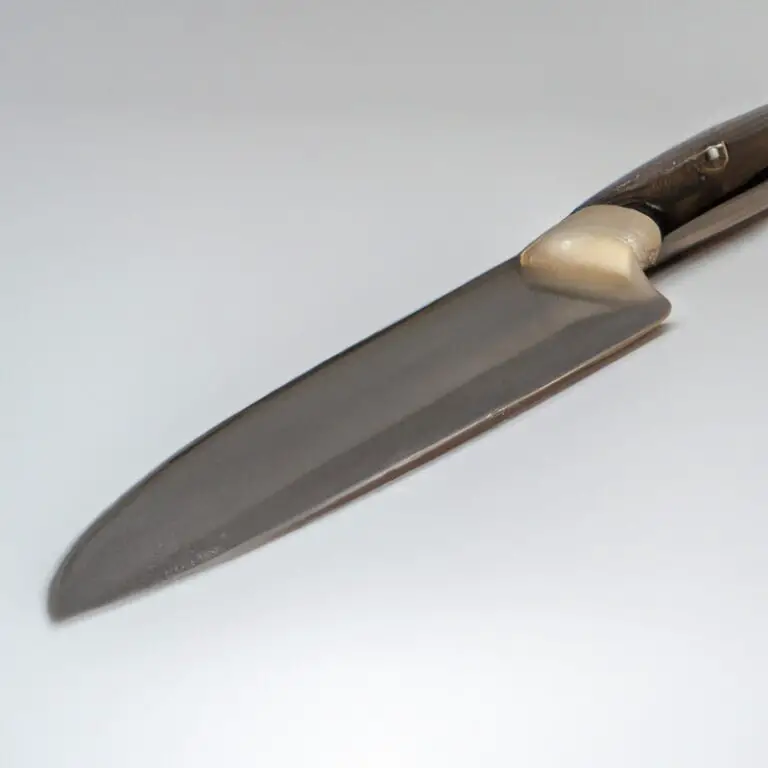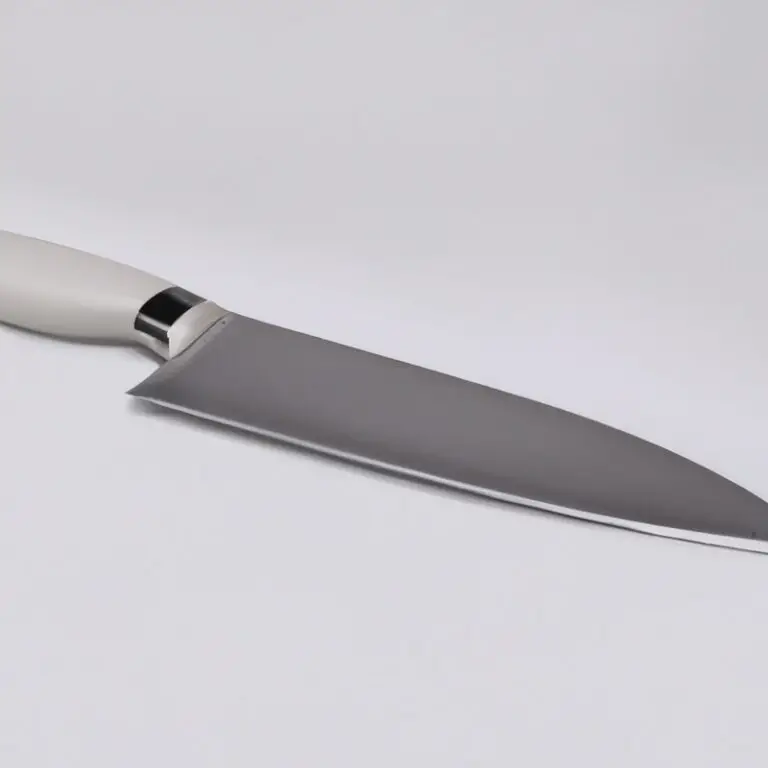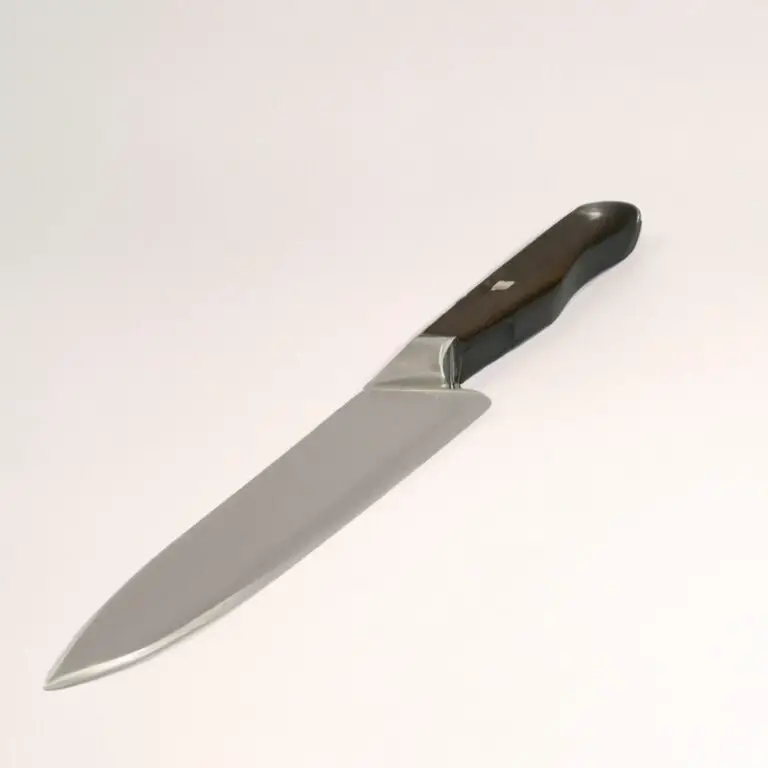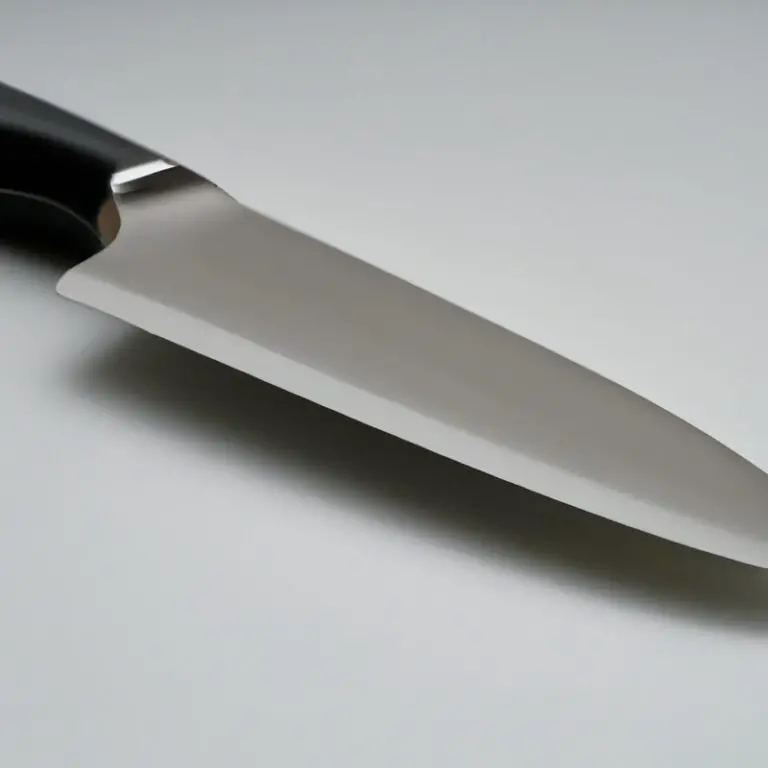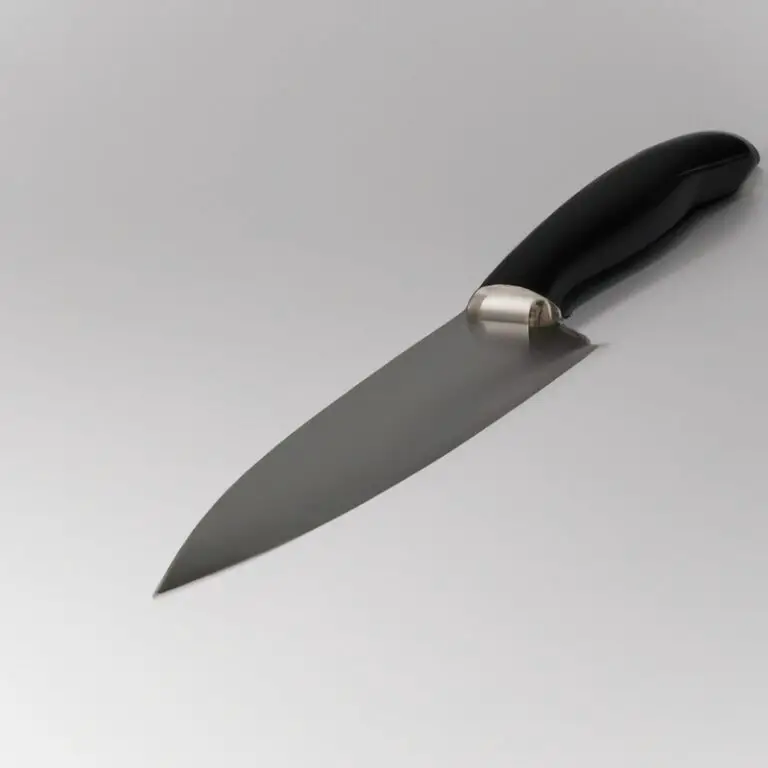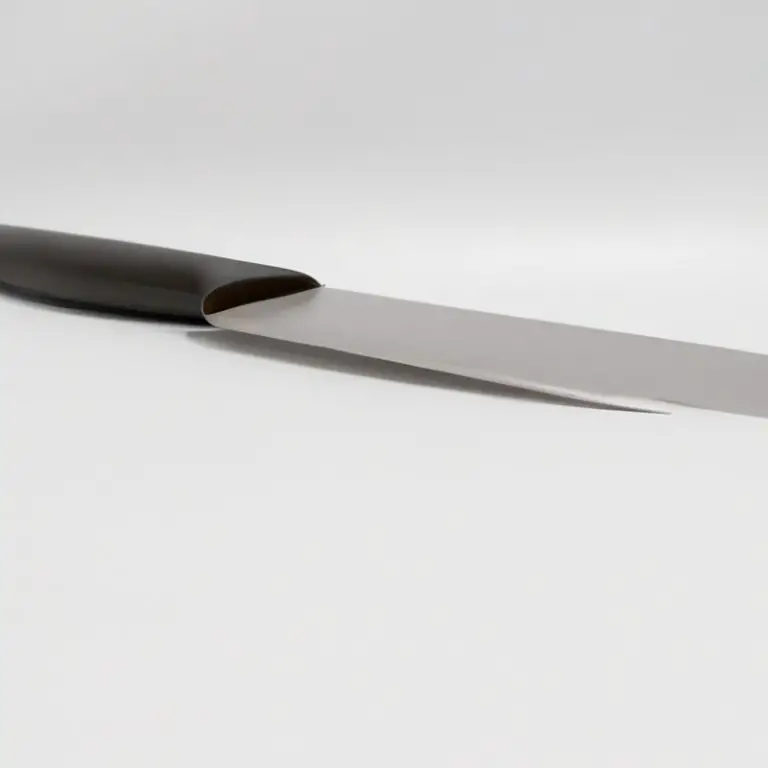How To Properly Hold a Chef Knife For Slicing? Slice Like a Pro!
Key Takeaways:
- Properly holding a chef’s knife is crucial for safe and efficient slicing, dicing, and chopping in the kitchen.
- Grip the handle firmly with your dominant hand and use your other hand to grip the blade near the base, with your fingertips resting on the spine.
- Maintain a comfortable and relaxed grip, avoiding a death grip or holding the knife too lightly, which can lead to slips and accidents.
- With practice and proper technique, you can improve your slicing skills and become more confident and efficient in the kitchen.
Are you tired of struggling to slice through your favorite foods with a chef knife? Whether you’re a newbie cook or a seasoned pro, mastering the grip and technique of holding a chef knife is essential for achieving precision cuts and avoiding accidents.
In this article, we’ll cover everything you need to know to properly hold a chef knife for slicing, including hand placement, blade control, grip styles, and common mistakes to avoid.
Plus, we’ll dive into tips for maintaining a sharp blade, choosing the right cutting board, and caring for your knife. Get ready to chop, dice, and mince like a pro!
| Technique | Description |
|---|---|
| Pinch Grip | A grip that involves holding the blade between the thumb and the index finger, with the middle finger resting against the spine of the blade. |
| Hammer Grip | A grip that involves holding the handle of the knife with the palm of the hand and wrapping the fingers around the handle. |
| Handle Grip | A grip that involves holding the handle of the knife with the whole hand. |
| Blade Grip | A grip that involves holding the blade itself with the whole hand. |
Mastering the grip: Proper hand placement on the handle of a chef knife
Mastering the grip is crucial when it comes to holding a chef knife. The proper hand placement on the handle of a chef knife is to grip it with your dominant hand.
Your fingers should wrap around the handle, and your thumb should be placed on the opposite side of the handle, resting on the spine of the blade.
The grip should be tight, but not too tight as to tire your muscles and hinder your technique. Proper hand placement allows for precision and control when slicing, chopping, or mincing ingredients.
With enough practice, you can establish muscle memory, which can lead to a consistent and efficient grip on your knife.
Understanding blade control: How to use your free hand to guide the knife while slicing
To achieve precise and safe slicing, it’s important to understand blade control. Your free hand plays a crucial role in guiding the knife as you cut through food.
Here’s a simple step-by-step guide to using your free hand:
- Hold the food with your non-knife hand, making sure to keep your fingers curled under to protect them.
- Keep your thumb behind your fingers and use it to guide the knife.
- As you slice through the food, use your thumb to guide the knife in a straight line and maintain a consistent thickness.
- Repeat the process as needed, always keeping your free hand and knife hand coordinated.
Remember to never place your non-knife hand on top of the blade or in the path of the knife. With practice, you’ll be able to control the blade and achieve precise cuts with ease.
Choosing the perfect knife for the job: Blade length, weight, and grip style considerations
Choosing the perfect knife for the job is an essential aspect of proper knife technique. The length and weight of the blade, as well as the grip style, are all important factors to consider when selecting a knife.
A longer blade is ideal for larger tasks like cutting through meat while a shorter blade is better suited for more delicate tasks like peeling fruits and vegetables.
A heavier knife can provide better control for tougher or denser foods, while a lighter knife is ideal for more delicate and precise tasks. The grip style is also a crucial consideration.
A comfortable grip that fits your hand well is essential to proper knife technique.
The pinch grip is the preferred grip for professional chefs as it provides maximum control and precision while keeping your hand away from the blade. The fingertip grip is a useful alternative for more delicate slicing tasks.
Ultimately, selecting the perfect knife for the job is a matter of personal preference and the specific task at hand.
The pinch grip technique: Why it’s the go-to grip for professional chefs
The pinch grip technique is widely used among professional chefs for good reason. It’s a grip that involves putting the index finger and thumb at the blade’s base, with the remaining fingers wrapped around the handle.
This grip allows for more control over the knife, ensuring accuracy and preventing injuries.
Professional chefs recommend this technique as it allows for a precise motion, perfect balance, and ease of movement. With the pinch grip, chefs can chop, slice, or dice ingredients with minimal wasted effort and strain on their wrists.
Therefore, it’s important to master this technique for all aspiring professional chefs.
The fingertip grip technique: A useful alternative grip for delicate slicing tasks
The fingertip grip technique is an alternative way to hold a chef knife that is helpful for delicate slicing tasks. Instead of gripping the handle with your entire hand, only the fingertips touch the handle.
This technique provides more control and precision while keeping the blade closer to the cutting surface.
It is commonly used for cutting thin slices of meat or fish and for making precise cuts on fruits and vegetables. However, it may require more practice and strength to use this grip effectively.
Experiment with different grips to find what works best for you and the task at hand.
Overcoming common mistakes: Tips for avoiding accidents and improving precision
Overcoming common mistakes is crucial for improving your precision and avoiding accidents while using a chef knife. Here are some tips for you to follow:
- Keep your cutting surface dry and stable to ensure the food doesn’t slip while you’re cutting.
- Always cut away from your body, keeping your fingers tucked in and guide hand secure.
- Avoid twisting or bending the knife while cutting to prevent accidental slips.
- Keep your knife sharp. A dull knife is not only inefficient but also more dangerous.
- Avoid using a chef knife to open cans, packages, or bottles, as this can damage the blade or even break it.
By following these simple tips, you can minimize the risk of accidents and improve your precision in the kitchen.
Honing and sharpening your blade: Importance of maintaining a sharp chef knife
To ensure your chef knife is always at its best, it’s crucial to frequently sharpen and hone the blade. A dull knife is not only frustrating to work with, but it’s also dangerous as it increases the risk of slipping and injuries.
A sharp knife allows you to handle the cutting tasks with more precision, control and reduces the effort it takes to slice through food.
Regular honing and sharpening also help to maintain the longevity of the blade, preventing the need for costly replacements. It’s recommended to hone your chef knife before and after each use, and sharpen it every few months or as needed.
A honing rod or sharpening stone can assist you in maintaining the sharpness of the blade.
Remember to always use caution when sharpening, and consider seeking guidance from a professional if you’re unsure.
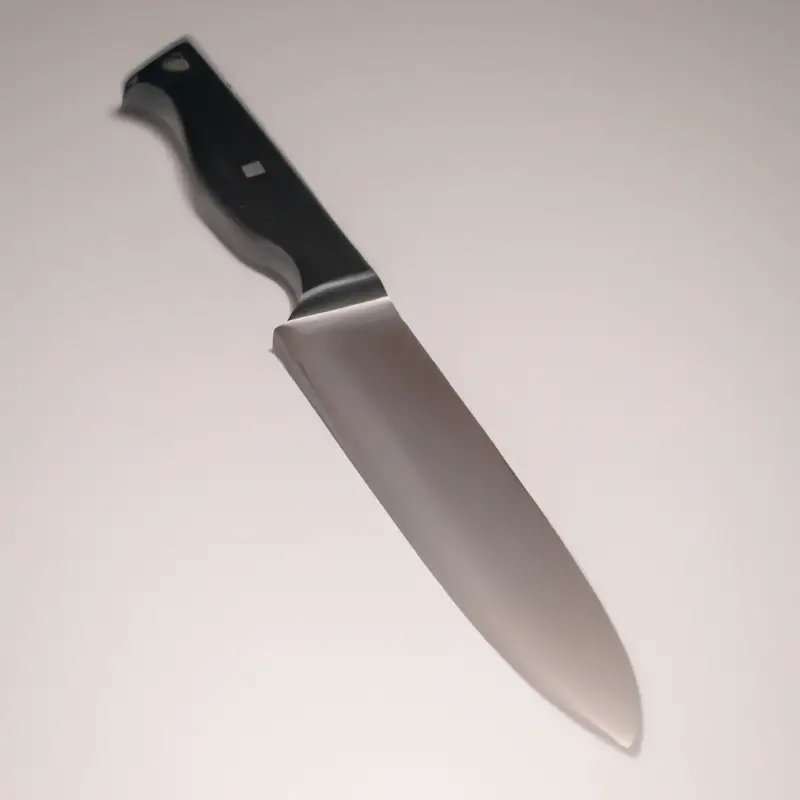
Mastering your cutting surface: The right cutting board for minimizing knife wear
The right cutting board is as important as the right chef knife. It can greatly affect the lifespan of your knife and its overall performance.
A cutting board that is too hard or too soft can cause your knife to wear out faster or become dull.
The ideal cutting board material is wood, particularly hardwood such as maple, cherry, or walnut. These materials have a natural ‘give’ and are gentle on blades, making them perfect for maintaining the sharpness of your knife.
Avoid using plastic or glass cutting boards as they can cause knife damage and are less hygienic.
Additionally, always clean and dry your cutting board after each use to prevent bacterial growth and warping. By using the right cutting board and taking good care of it, you can prolong the life of your valuable chef knife.
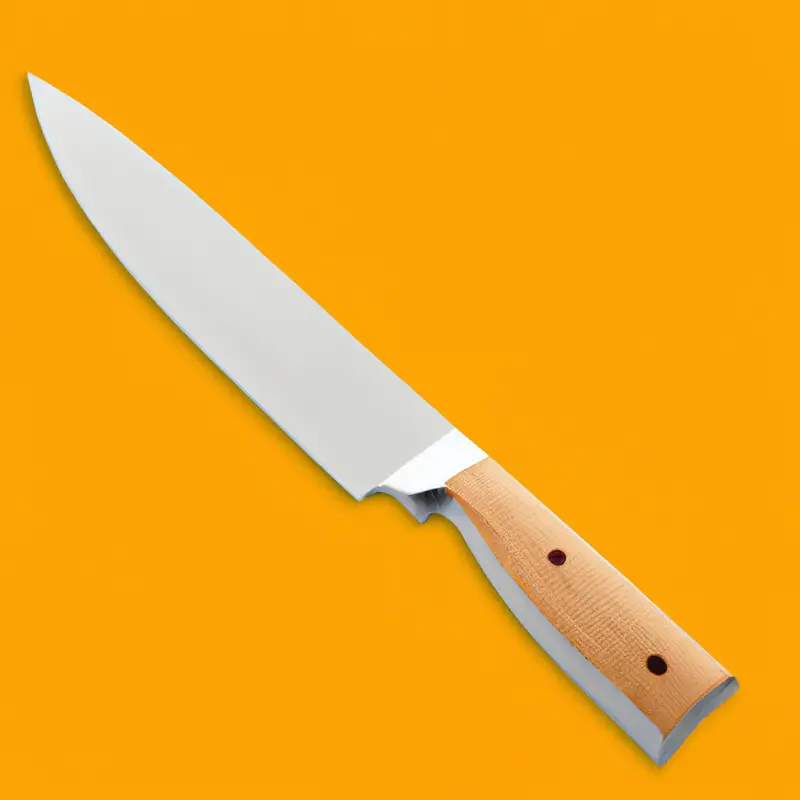
Keeping your cutlery clean: Best practices for caring and storing your chef knife
To keep your cutlery clean and your chef knife in top condition, follow these best practices:
- Wash your knife by hand with soap and warm water immediately after using it.
- Avoid leaving your knife in the sink or soaking it in water.
- Dry the knife with a towel before storing it.
- Store your knife in a knife block, on a magnetic strip, or in a protective sheath to prevent damage.
- Sharpen and hone your knife regularly to maintain its sharpness.
- Avoid using abrasive cleaners or scrubbers, as they can damage the blade.
- Do not put your knife in the dishwasher, as the high heat and detergents can cause damage.
By following these simple practices, you can protect and maintain your chef knife for years to come.
Holding a chef knife for more than just slicing: Essential techniques for chopping, dicing, and mincing
When it comes to holding a chef knife for chopping, dicing, and mincing, it’s important to have a good grip on the handle and blade for optimal control and precision. The pinch grip technique is the recommended grip for professional chefs as it provides a secure hold on the handle with your thumb and index finger, while the middle finger rests against the base of the blade for added leverage.
This grip allows you to pivot the blade back and forth while chopping or mincing with ease.
For dicing, the fingertip grip technique can be useful for delicate precision cuts. Remember to keep your fingers curled and tucked away from the blade while cutting and always use a sharp knife.
With proper technique and practice, you can master these essential cutting skills.
Final Verdict
Mastering the proper grip and techniques for holding a chef knife is essential for any home cook or professional chef. By understanding blade control and the different grip styles available, you can improve your precision and avoid common mistakes.
It’s crucial to choose the right knife for the job, hone and sharpen the blade regularly, and use the correct cutting board to minimize knife wear.
By implementing these best practices and caring for your cutlery properly, you can ensure that your chef knife remains a reliable and essential tool in the kitchen. Remember, holding a chef knife for slicing is just the beginning; with proper techniques, you can also chop, dice, and mince with ease.
Trust in your newly acquired knowledge, and elevate your culinary creations to the next level.

